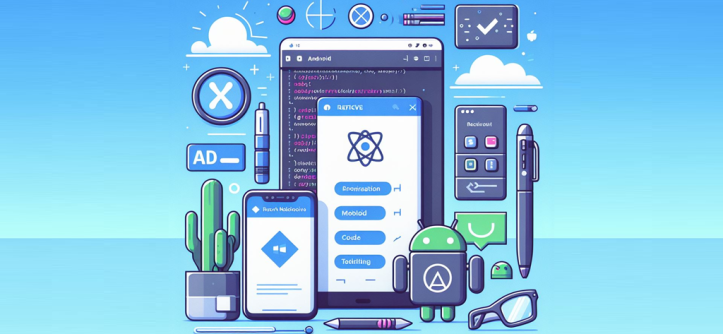React Native has emerged as a leading choice for businesses and developers seeking efficient cross-platform mobile app development. It offers a compelling blend of speed, efficiency, and native-like performance, making it a strong contender against traditional native development approaches. In this guide, we’ll delve into the reasons why React Native might be the perfect fit for your next mobile project.
Understanding React Native’s Core Principles
React Native, created by Meta (formerly Facebook), is an open-source JavaScript framework that allows you to build mobile apps for iOS and Android using a single codebase. It leverages the popular React library, known for its component-based architecture and efficient UI rendering.
Here’s what makes React Native stand out:
- Cross-Platform Development: The most significant advantage is the ability to write code once and deploy it on both iOS and Android platforms. This eliminates the need for separate development teams and significantly reduces development time and costs.
- Native-Like Performance: React Native bridges the gap between web and native development. It uses native UI components, resulting in apps that feel and perform like native apps built with Swift (for iOS) or Kotlin/Java (for Android).
- Fast Refresh and Hot Reloading: Developers benefit from features like Fast Refresh and Hot Reloading, allowing them to see changes in the app instantly without recompiling the entire codebase. This accelerates the development process and makes debugging easier.
- Large and Active Community: React Native boasts a vast and vibrant community of developers, contributing to a wealth of resources, libraries, and tutorials. This means you’ll find extensive support and solutions to common challenges.
- Cost-Effective: Due to code reusability and faster development cycles, React Native can be a more cost-effective option than building separate native apps.
Who Should Consider React Native?
- Startups and Small Businesses: React Native is a great choice for startups with limited resources. It allows them to quickly launch apps on multiple platforms without breaking the bank.
- Businesses Targeting Multiple Platforms: If your goal is to reach a wide audience across iOS and Android, React Native simplifies the development process, ensuring consistent user experiences.
- Developers Familiar with JavaScript: If your team is already proficient in JavaScript (the language used for React Native), the learning curve is minimal, leading to faster development.
When Might React Native Not Be the Best Fit?

- Highly Complex UI/UX: If your app requires highly customized UI elements or complex animations, native development might offer more flexibility and performance optimization.
- Hardware-Intensive Apps: Games or apps that rely heavily on device hardware (e.g., AR/VR) might perform better with native development to fully utilize hardware capabilities.
Related: HOW TO UPDATE APPS ON ANDROID
Getting Started with React Native
- Prerequisites: Ensure you have Node.js and a code editor (like Visual Studio Code) installed.
- Installation: Use the React Native CLI to create a new project: npx create-react-native-app
- Development: Start building your app using JavaScript and JSX (a syntax extension for JavaScript that resembles HTML).
- Deployment: Test your app on simulators or real devices and deploy it to app stores.
The Future of React Native
React Native continues to evolve rapidly. The community is actively working on improving performance, enhancing tooling, and expanding capabilities. This makes it a future-proof choice for mobile app development.
Conclusion
React Native is a powerful and versatile framework that has democratized mobile app development. By providing a streamlined way to build high-quality apps for multiple platforms, it has become an invaluable tool for businesses and developers alike.
If you’re looking for a cost-effective, efficient, and scalable solution for your mobile app development needs, React Native is definitely worth considering. With its growing community and continuous advancements, it’s well-positioned to shape the future of cross-platform development.
Sources





Leave a Reply